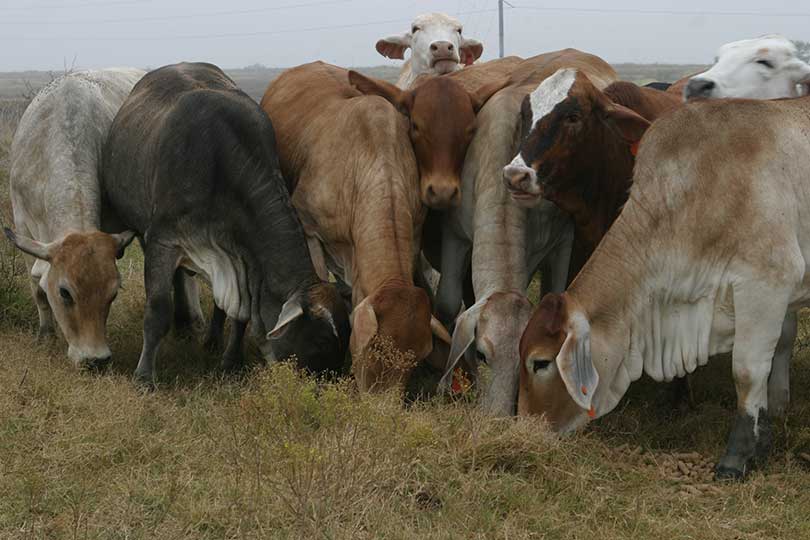The Texas Animal Health Commission (TAHC) has confirmed the presence of cattle fever ticks after a suspect tick was found on a bull on a Live Oak County ranch.
The infested premises is located about 110 miles outside of the Permanent Fever Tick Quarantine Zone. The infested premises has been placed under quarantine and all cattle on the premises have started treatment for fever ticks. TAHC is conducting an epidemiological investigation to determine the source of the fever ticks and trace outs from the premises.
A Control Purpose Quarantine Area (CPQA) has been established for systematic inspection of livestock and wildlife hosts in the portion of Live Oak County surrounding the infested premises. Livestock owners located in the identified CPQA are being contacted by TAHC and USDA personnel.
“When producers observe ticks on their livestock, it is imperative that they contact their local TAHC livestock inspector or region office, USDA inspector, private veterinarian, or local AgriLife Extension office to arrange for collection and submission of tick samples to the TAHC laboratory in Austin, Texas,” said Dr. Andy Schwartz, TAHC executive director. “This will help ensure the parasites are not cattle fever ticks.”
Premises located within the CPQA are subject to movement restrictions, systematic inspections and potential treatment in accordance with the regulations in Title 4, Texas Administrative Code, Chapter 41 Fever Ticks.
There are now four CPQAs established outside of the Permanent Fever Tick Quarantine Zone, an area that runs along the Texas-Mexico border, located in Jim Wells, Kleberg and Willacy counties. The Permanent Quarantine Zone was created as a buffer zone to Mexico, where fever ticks are common. There are about 450,000 acres under various types of fever tick quarantine outside of the Permanent Quarantine Zone, including a Temporary Preventative Quarantine Zone (TPQA) in Cameron County.
The TPQA was established in 2014 when cattle fever ticks were discovered on cattle, horses, white-tailed deer and nilgai antelope. TAHC modified the TPQA in Cameron County last month to about 200,000 acres after enhanced surveillance of the area determined that 14,460 acres located in the southwest corner of the TPQA meets requirements for quarantine release.
Cattle fever ticks, known scientifically as Rhipicephalus (formerly Boophilus) annulatus and R. microplus, are a significant threat to the U.S. cattle industry. These ticks are capable of carrying the protozoa, or microscopic parasites, Babesia bovis or B. bigemina, which cause the disease commonly known as cattle fever.
Officials say failure to contain the spread of fever ticks and the disease they carry can result in extensive losses.
For more information about cattle fever ticks, visit http://www.tahc.texas.gov/news/brochures/TAHCBrochure_FeverTick.pdf.

